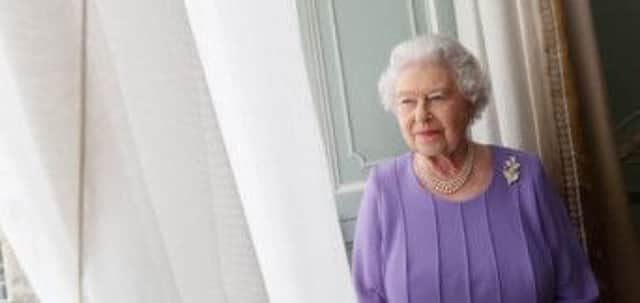Harry Benson reveals new Queen portrait


Harry Benson, the Glaswegian who shot to fame after capturing The Beatles having a pillow fight in Paris in the 1960s, went on to carve out a glittering career capturing world leaders, rock singers, supermodels and film stars.
But exactly half a century after following The Fab Four to America, Benson returned home for one of his career highlights – creating an intimate new portrait of the Queen.
Advertisement
Hide AdAdvertisement
Hide AdHe spent an hour with Her Majesty in her private study in Buckingham Palace working on the portrait, which is now on display at the Scottish National Portrait Gallery in Edinburgh.
The gallery wanted to honour the Queen with a new portrait after she reopened the revamped attraction three years ago.
New York-based Benson – who has worked for magazines Vanity Fair, Newsweek and People and Life – visited the palace in March after being commissioned by the Queen Street gallery, although the job was kept secret until yesterday’s unveiling, timed to coincide with the traditional “royal week” in Scotland.
Born in Knightswood, in Glasgow, in 1929, Benson first captured the Queen on camera when she visited a coal mine in Fife in 1957 and went on to photograph her all over the UK, as well as on overseas tours to the Caribbean and
the US.
Benson, who studied at Glasgow School of Art, became a successful Fleet Street photographer after launching his career at the Hamilton Advertiser, in Lanarkshire, and learning his craft taking wedding pictures.
The lensman – who has photographed Mick Jagger, Michael Jackson, Nelson Mandela, Clint Eastwood, Kate Moss and Fred Astaire – was given the choice of selecting the colour and dress worn by Her Majesty, who is pictured sporting a gold and diamond brooch featuring Scotland’s national emblem the thistle.
He told The Scotsman: “It really is an extreme honour for me. I’ve been taking her picture for years, but this was the first portrait I’ve done of her.
“I was a bit nervous. You’re always a bit on your toes with someone famous, but this is one of the most important jobs I’ve ever had to do.
Advertisement
Hide AdAdvertisement
Hide Ad“I didn’t take an assistant along. If you take an assistant, you lose a bit of your intimacy with a person. You don’t get that if there is somebody behind my back looking at the subject. I actually think my best pictures were always taken without the use of assistants.
“I wanted her to be what she thinks she is, rather than what I think she is. That’s how I’ve always tried to photograph throughout my whole life. Too many photographers try to get people to be what they’re not. She was just terrific.
“I wanted to make the Queen as relaxed as she could be. After I had finished, I started speaking to her about her dogs and she actually brought them out to meet me, which was really nice.”
Christopher Baker, director of the Scottish National Portrait Gallery, said: “For the past 20 years or so, we’ve occasionally undertaken commissions and, funnily enough, the very first portrait we commissioned was of the then Queen Mother, which was painted by Avigdor Arikha, in 1983.
“We first proposed this portrait just after the reopening of the gallery by the Queen after it was refurbished in 2011. It was notable that although we had many superb portraits, we had never actually commissioned one of the Queen.
“We’ve hung the photograph in the great hall, where the official opening ceremony was carried out, which seems very appropriate.
“We had worked with Harry on a hugely successful exhibition at the portrait gallery in 2006. I was very keen that the portrait was a photograph and I’m also a great admirer of his work.
“His portraiture is distinctive – it’s often informal and it’s always respectful. It seemed that those qualities were very important for a commission like this.
Advertisement
Hide AdAdvertisement
Hide Ad“Obviously, we were dealing with perhaps the most famous subject of portraiture in the world. We were keen that our new commission was a fresh take of a very familiar, much-loved and respected subject, and I think that’s what’s been achieved.”
SEE ALSO: